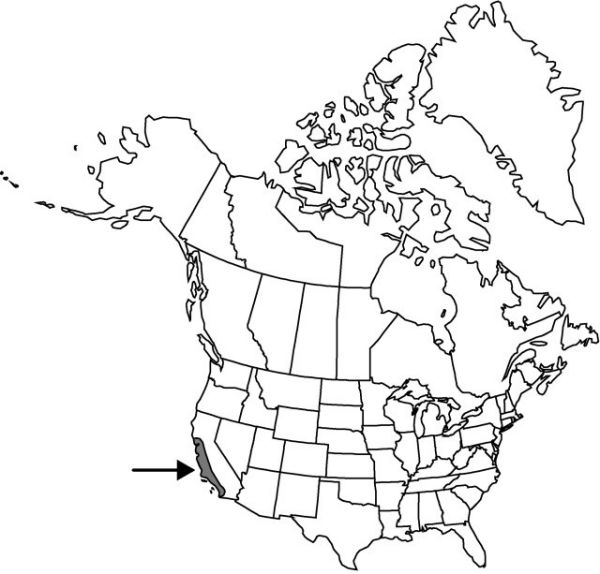Difference between revisions of "Fritillaria biflora"
Edwards’s Bot. Reg. 20: under plate 1663. 1834.
FNA>Volume Importer |
imported>Volume Importer |
||
| (5 intermediate revisions by 2 users not shown) | |||
| Line 8: | Line 8: | ||
}} | }} | ||
|common_names=Chocolate-lily;mission bells | |common_names=Chocolate-lily;mission bells | ||
| + | |special_status={{Treatment/ID/Special_status | ||
| + | |code=E | ||
| + | |label=Endemic | ||
| + | }} | ||
|basionyms= | |basionyms= | ||
|synonyms= | |synonyms= | ||
| Line 45: | Line 49: | ||
-->{{#Taxon: | -->{{#Taxon: | ||
name=Fritillaria biflora | name=Fritillaria biflora | ||
| − | |||
|authority=Lindley | |authority=Lindley | ||
|rank=species | |rank=species | ||
| Line 56: | Line 59: | ||
|publication title=Edwards’s Bot. Reg. | |publication title=Edwards’s Bot. Reg. | ||
|publication year=1834 | |publication year=1834 | ||
| − | |special status= | + | |special status=Endemic |
| − | |source xml=https:// | + | |source xml=https://bitbucket.org/aafc-mbb/fna-data-curation/src/2e0870ddd59836b60bcf96646a41e87ea5a5943a/coarse_grained_fna_xml/V26/V26_282.xml |
|genus=Fritillaria | |genus=Fritillaria | ||
|species=Fritillaria biflora | |species=Fritillaria biflora | ||
Latest revision as of 21:14, 5 November 2020
Bulb scales: large 2–8; small 0–4. Stem 1–4.5 dm. Leaves 3–7, alternate, often ± crowded just above ground level, 5–19 cm; blade linear or oblong to narrowly ovate. Flowers nodding, odorless or sometimes with unpleasant odor; tepals dark brown to greenish purple or yellowish green, narrowly ovoid, 1.8–4 cm, apex not recurved; nectaries prominent, purplish to greenish, narrowly linear, forming narrow band 2/3 to equaling tepal length; style obviously branched for 1/2–2/3 its length, branches longer than 1.5 mm. Capsules angled.
Discussion
Varieties 2 (2 in the flora).
This species is sometimes confused with Fritillaria agrestis, which grows in heavier soil and has flowers with an unpleasant odor. Fritillaria roderickii is still recognized by some botanists, but it appears to be little more than a localized flower-color variant of F. biflora var. biflora, and is valued by horticulturists for this reason.
Selected References
None.
Key
| 1 | Leaf blade widely lanceolate to oblanceolate. | Fritillaria biflora var. biflora |
| 1 | Leaf blade linear to narrowly lanceolate. | Fritillaria biflora var. ineziana |
